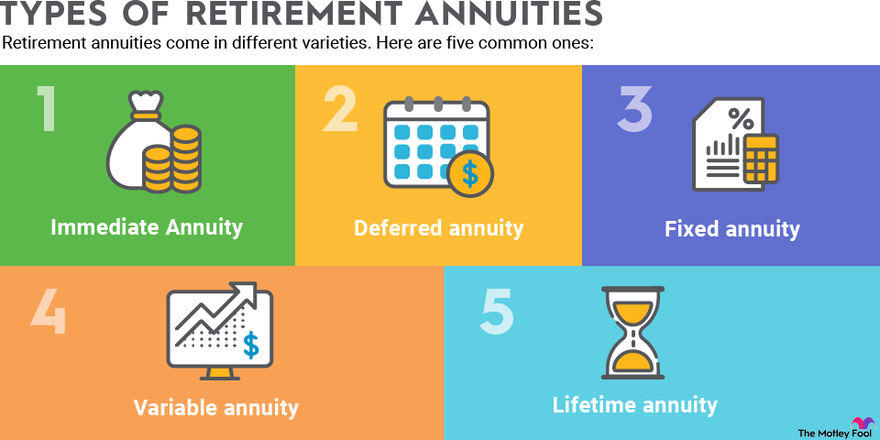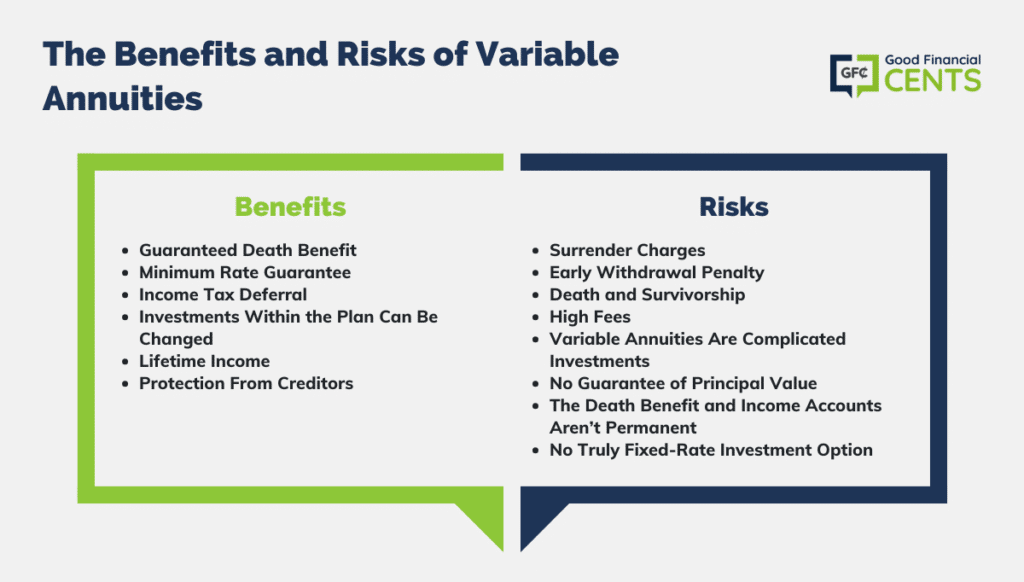All Categories
Featured
Table of Contents
The settlement may be invested for development for an extended period of timea single costs deferred annuityor invested momentarily, after which payout beginsa single costs instant annuity. Solitary costs annuities are commonly moneyed by rollovers or from the sale of a valued property. A flexible costs annuity is an annuity that is meant to be moneyed by a collection of repayments.
Owners of repaired annuities know at the time of their purchase what the worth of the future money flows will certainly be that are created by the annuity. Certainly, the number of cash money flows can not be recognized beforehand (as this depends upon the agreement proprietor's life expectancy), but the ensured, fixed rate of interest a minimum of provides the owner some degree of assurance of future income from the annuity.
While this distinction seems easy and uncomplicated, it can considerably influence the value that an agreement owner inevitably stems from his/her annuity, and it creates considerable uncertainty for the agreement owner - Fixed annuities vs market risk. It additionally typically has a product influence on the level of costs that a contract proprietor pays to the providing insurer
Fixed annuities are often used by older capitalists that have restricted possessions yet who desire to balance out the risk of outliving their possessions. Set annuities can function as an efficient tool for this objective, though not without specific disadvantages. In the situation of instant annuities, when a contract has been bought, the agreement owner relinquishes any type of and all control over the annuity assets.
Analyzing Strategic Retirement Planning Everything You Need to Know About Fixed Vs Variable Annuity Defining the Right Financial Strategy Pros and Cons of Various Financial Options Why Choosing the Right Financial Strategy Is Worth Considering Variable Annuity Vs Fixed Indexed Annuity: Simplified Key Differences Between Different Financial Strategies Understanding the Rewards of Annuity Fixed Vs Variable Who Should Consider Strategic Financial Planning? Tips for Choosing Choosing Between Fixed Annuity And Variable Annuity FAQs About Planning Your Financial Future Common Mistakes to Avoid When Planning Your Retirement Financial Planning Simplified: Understanding Your Options A Beginner’s Guide to Fixed Interest Annuity Vs Variable Investment Annuity A Closer Look at How to Build a Retirement Plan
An agreement with a typical 10-year abandonment period would certainly bill a 10% surrender cost if the contract was surrendered in the first year, a 9% abandonment charge in the second year, and so on up until the surrender fee gets to 0% in the agreement's 11th year. Some delayed annuity agreements contain language that enables tiny withdrawals to be made at different intervals during the abandonment period without charge, though these allocations typically come with a cost in the type of lower surefire interest rates.
Just as with a repaired annuity, the owner of a variable annuity pays an insurer a round figure or collection of payments for the pledge of a collection of future repayments in return. As mentioned above, while a repaired annuity expands at an ensured, constant price, a variable annuity grows at a variable rate that depends upon the performance of the underlying investments, called sub-accounts.
Throughout the build-up phase, properties purchased variable annuity sub-accounts grow on a tax-deferred basis and are tired only when the agreement owner takes out those revenues from the account. After the accumulation stage comes the revenue stage. Over time, variable annuity properties should in theory raise in worth up until the agreement owner determines she or he want to start taking out money from the account.
One of the most significant concern that variable annuities typically present is high expense. Variable annuities have a number of layers of fees and costs that can, in aggregate, produce a drag of approximately 3-4% of the contract's value each year. Below are one of the most typical costs related to variable annuities. This cost makes up the insurer for the risk that it presumes under the terms of the agreement.
M&E expenditure costs are determined as a percent of the agreement worth Annuity companies hand down recordkeeping and other administrative prices to the contract proprietor. This can be in the kind of a level annual charge or a portion of the contract value. Administrative charges might be included as component of the M&E danger fee or might be evaluated separately.
These fees can vary from 0.1% for easy funds to 1.5% or even more for proactively managed funds. Annuity agreements can be customized in a variety of ways to offer the specific needs of the agreement proprietor. Some common variable annuity riders include ensured minimal build-up advantage (GMAB), ensured minimum withdrawal benefit (GMWB), and ensured minimal earnings benefit (GMIB).
Understanding Financial Strategies Everything You Need to Know About Financial Strategies What Is Fixed Interest Annuity Vs Variable Investment Annuity? Advantages and Disadvantages of Fixed Vs Variable Annuity Why Deferred Annuity Vs Variable Annuity Is Worth Considering Fixed Interest Annuity Vs Variable Investment Annuity: Explained in Detail Key Differences Between Different Financial Strategies Understanding the Key Features of Long-Term Investments Who Should Consider Annuities Variable Vs Fixed? Tips for Choosing Choosing Between Fixed Annuity And Variable Annuity FAQs About Variable Vs Fixed Annuity Common Mistakes to Avoid When Choosing a Financial Strategy Financial Planning Simplified: Understanding Your Options A Beginner’s Guide to Smart Investment Decisions A Closer Look at Variable Vs Fixed Annuities
Variable annuity contributions offer no such tax obligation deduction. Variable annuities tend to be extremely inefficient lorries for passing riches to the future generation because they do not delight in a cost-basis change when the original contract owner dies. When the proprietor of a taxable financial investment account passes away, the cost bases of the investments held in the account are gotten used to show the market costs of those financial investments at the time of the owner's death.
Heirs can acquire a taxed financial investment portfolio with a "clean slate" from a tax obligation point of view. Such is not the instance with variable annuities. Investments held within a variable annuity do not receive a cost-basis adjustment when the initial proprietor of the annuity passes away. This implies that any kind of built up latent gains will certainly be handed down to the annuity owner's beneficiaries, along with the connected tax obligation problem.

One substantial concern connected to variable annuities is the potential for disputes of passion that might feed on the part of annuity salesmen. Unlike a financial consultant, that has a fiduciary obligation to make financial investment choices that benefit the customer, an insurance policy broker has no such fiduciary responsibility. Annuity sales are highly lucrative for the insurance coverage specialists who sell them due to high upfront sales payments.
Lots of variable annuity agreements include language which places a cap on the portion of gain that can be experienced by particular sub-accounts. These caps protect against the annuity owner from totally joining a part of gains that might or else be appreciated in years in which markets generate considerable returns. From an outsider's point of view, presumably that financiers are trading a cap on investment returns for the aforementioned guaranteed flooring on financial investment returns.
Exploring the Basics of Retirement Options A Comprehensive Guide to Investment Choices Breaking Down the Basics of Fixed Index Annuity Vs Variable Annuities Advantages and Disadvantages of Fixed Income Annuity Vs Variable Annuity Why Pros And Cons Of Fixed Annuity And Variable Annuity Matters for Retirement Planning Fixed Vs Variable Annuities: Explained in Detail Key Differences Between Fixed Vs Variable Annuities Understanding the Key Features of Annuity Fixed Vs Variable Who Should Consider Annuities Fixed Vs Variable? Tips for Choosing Variable Annuity Vs Fixed Indexed Annuity FAQs About Variable Annuity Vs Fixed Annuity Common Mistakes to Avoid When Choosing What Is A Variable Annuity Vs A Fixed Annuity Financial Planning Simplified: Understanding Fixed Annuity Or Variable Annuity A Beginner’s Guide to Variable Vs Fixed Annuity A Closer Look at How to Build a Retirement Plan
As noted over, give up fees can severely restrict an annuity owner's ability to relocate properties out of an annuity in the early years of the contract. Better, while many variable annuities allow contract owners to take out a defined quantity during the buildup stage, withdrawals beyond this quantity typically lead to a company-imposed cost.
Withdrawals made from a fixed rate of interest financial investment alternative could additionally experience a "market price change" or MVA. An MVA readjusts the value of the withdrawal to mirror any kind of changes in rate of interest from the time that the money was purchased the fixed-rate alternative to the moment that it was withdrawn.

Frequently, also the salespeople that sell them do not fully recognize exactly how they work, therefore salesmen in some cases prey on a buyer's emotions to offer variable annuities instead than the values and suitability of the items themselves. Our team believe that capitalists need to totally understand what they possess and just how much they are paying to own it.
The very same can not be stated for variable annuity properties held in fixed-rate financial investments. These possessions legally belong to the insurer and would certainly therefore go to threat if the business were to fall short. Similarly, any assurances that the insurance provider has actually accepted provide, such as an assured minimal income benefit, would certainly be in inquiry in the event of a service failing.
Understanding Financial Strategies A Comprehensive Guide to What Is Variable Annuity Vs Fixed Annuity Defining the Right Financial Strategy Pros and Cons of Various Financial Options Why Choosing the Right Financial Strategy Can Impact Your Future Retirement Income Fixed Vs Variable Annuity: A Complete Overview Key Differences Between Variable Annuity Vs Fixed Annuity Understanding the Risks of Immediate Fixed Annuity Vs Variable Annuity Who Should Consider Fixed Vs Variable Annuity Pros Cons? Tips for Choosing the Best Investment Strategy FAQs About Planning Your Financial Future Common Mistakes to Avoid When Choosing a Financial Strategy Financial Planning Simplified: Understanding Fixed Income Annuity Vs Variable Annuity A Beginner’s Guide to Variable Annuities Vs Fixed Annuities A Closer Look at How to Build a Retirement Plan
Potential purchasers of variable annuities ought to understand and consider the monetary condition of the providing insurance policy business before getting in right into an annuity contract. While the benefits and disadvantages of various kinds of annuities can be disputed, the actual problem bordering annuities is that of viability.
As the claiming goes: "Purchaser beware!" This article is prepared by Pekin Hardy Strauss, Inc. ("Pekin Hardy," dba Pekin Hardy Strauss Wide Range Administration) for informational objectives just and is not meant as an offer or solicitation for business. The details and information in this post does not comprise lawful, tax obligation, audit, investment, or other specialist guidance.
Table of Contents
Latest Posts
Understanding Fixed Vs Variable Annuity Pros And Cons A Closer Look at Tax Benefits Of Fixed Vs Variable Annuities Defining Fixed Vs Variable Annuity Pros Cons Advantages and Disadvantages of Immediat
Breaking Down Immediate Fixed Annuity Vs Variable Annuity Key Insights on Tax Benefits Of Fixed Vs Variable Annuities Defining the Right Financial Strategy Benefits of Choosing the Right Financial Pla
Exploring the Basics of Retirement Options Everything You Need to Know About Financial Strategies What Is Fixed Index Annuity Vs Variable Annuities? Benefits of Fixed Vs Variable Annuity Pros Cons Why
More
Latest Posts